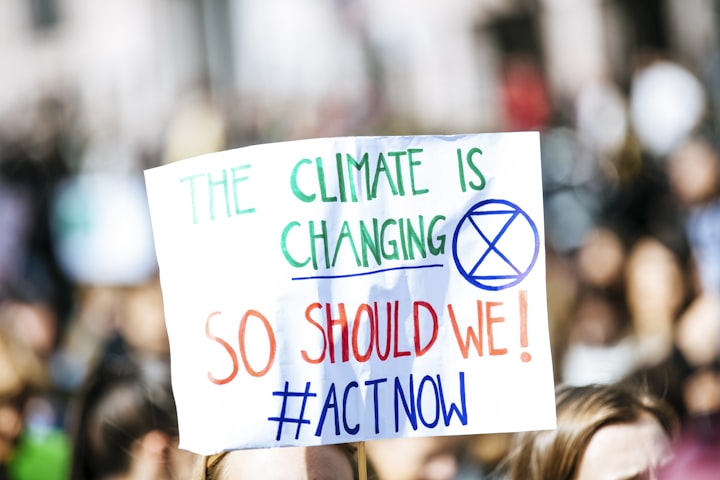Title: "Whispers of the Silent Forest"
"Unveiling the Symphony of Nature's Last Stand"

In a distant Arctic village, where the icy landscapes have long been the heartbeat of the community, the story unfolds around an elderly Inuit woman named Aana. For generations, her people have lived in harmony with the frozen world, relying on the ice for their sustenance and cultural identity.
As climate change accelerates, the once-predictable rhythms of the Arctic begin to unravel. Icebergs melt, and the soundscapes of cracking ice become haunting echoes of a disappearing world. Aana, who has spent her entire life attuned to the nuances of the ice, senses the imminent loss of the environment she holds dear.
The emotional core of the story revolves around Aana's efforts to pass on the ancient wisdom of her people to the younger generation, particularly her granddaughter, Sila. Aana's tales of the land's vibrant history, rich traditions, and the spirits residing within the ice become a desperate attempt to preserve a fading heritage.
As the ice continues to recede, Aana and Sila embark on a poignant journey to reconnect with the disappearing landscapes and bid farewell to the once-thriving ecosystem. Along the way, they encounter the struggles of Arctic wildlife, now displaced and disoriented, mirroring the challenges faced by their human counterparts.
"The Last Melody of the Ice" explores the emotional landscape of loss, resilience, and intergenerational connections in the face of climate change. Aana's poignant narration, set against the backdrop of melting ice and changing ecosystems, serves as a metaphor for the fragility of our planet's environments and the urgency of preserving our shared cultural and natural heritage. The story becomes a call to action, urging readers to acknowledge the emotional impact of environmental change and take collective steps to protect the Earth's delicate symphony before it fades away entirely.
Addressing climate change is a collective responsibility that involves both individuals and governments. Each plays a crucial role in mitigating the impacts of climate change and transitioning towards a sustainable future.
Individual Responsibility:
Consumer Choices: Individuals can make environmentally conscious choices in their daily lives, such as opting for renewable energy sources, reducing meat consumption, and supporting sustainable products. By making informed consumer decisions, individuals contribute to the demand for eco-friendly alternatives.
Energy Conservation: Adopting energy-efficient practices at home, such as using energy-saving appliances, turning off lights when not needed, and reducing water consumption, helps lower personal carbon footprints.
Transportation: Choosing public transport, carpooling, biking, or walking instead of relying solely on private vehicles helps reduce greenhouse gas emissions. Electric and hybrid vehicles are also environmentally friendly options.
Waste Reduction: Minimizing waste production, recycling, and reusing materials contribute to a circular economy, reducing the environmental impact associated with the extraction and processing of raw materials.
Advocacy and Education: Individuals can raise awareness about climate change by engaging in conversations, participating in community initiatives, and educating others about sustainable practices. Advocacy for policy changes is a powerful tool to drive collective action.
Government Responsibility:
Policy and Regulation: Governments play a vital role in implementing policies and regulations that incentivize sustainable practices. This includes setting emission standards, promoting renewable energy, and imposing penalties for environmental violations.
Investment in Renewable Energy: Governments can invest in and promote the development of renewable energy sources, making them more accessible and affordable for businesses and individuals. Subsidies and incentives can encourage the adoption of clean energy technologies.
Infrastructure Development: Planning and investing in sustainable infrastructure, such as public transportation, energy-efficient buildings, and green spaces, contribute to reducing overall carbon emissions.
International Collaboration: Climate change is a global issue, and governments must collaborate on international platforms to develop and implement strategies that transcend borders. Agreements like the Paris Agreement exemplify the need for collective action.
Education and Research: Governments can invest in educational programs that raise awareness about climate change and sustainable practices. Funding for research and development of green technologies is crucial for driving innovation.
In essence, individuals and governments share the responsibility of combating climate change. While individuals contribute through their daily choices and advocacy, governments play a pivotal role in creating an enabling environment through policies, regulations, and strategic investments that propel societies toward a sustainable and resilient future. The synergy of these efforts is essential for effectively addressing the complex challenges posed by climate change.





Comments (1)
Hey there, just wanna let you know that this needs to have the disclaimer added to the beginning or ending, stating that it was created with the help of AI 😊